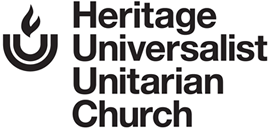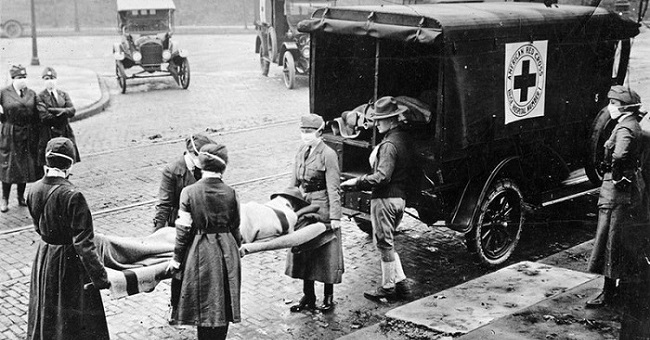by Mike Roberts, Church Historian
During the past five months of the COVID pandemic, reference has frequently been made to the outbreak of flu that wreaked havoc on the world in 1918. Certainly there are similarities to COVID but there are also stark differences.
The 1918 pandemic is often referred to as the Spanish Flu. In reality, the virus did not start in Spain nor was it any worse there than elsewhere. The pandemic was most deadly from a period of September 1918 to January 1919. Those dates saw the end of World War I but during the war, the combatant countries exercised strong censorship of the press. It was believed that if the enemy discovered that flu was decimating a country it would strengthen their adversary’s resolve to keep the fight going. Thus, in the early stages of the pandemic there was little mention of it in the news. Spain, however, had remained neutral in the war and thus, had no censorship. They openly reported what was happening and it appeared to the world that the virus had started there.
The close living conditions of military life made soldiers more susceptible to acquiring the virus. When they returned to their home country, they brought the virus with them and it spread rapidly. Record keeping was not as accurate in 1918 as it is today and estimates of the death toll vary. However, recent studies have suggested that approximately 550,000 Americans succumbed to the disease. Keep in mind that the population of the U.S. was only about 1/3 of what it is today. Twenty million died worldwide.
Of course, 100 years ago the state of medical science was far less advanced than today. Treatment for those who fell ill with the disease was very limited and thus, the mortality rate of those infected was much higher. Instructions to doctors concerning treatment protocols from the Surgeon General of the United States were to encourage bed rest, ventilate the room with fresh air, supply abundant food and seek pain relief with the use of Dover’s powder.
Occasionally, we hear those who monitor COVID speak of a possible second wave of the disease. The flu of 1918 actually had four waves. The first saw only a small number of deaths. The second, however, was the most deadly and occurred in late 1918 and early 1919. A third wave hit in summer of 1919 and caused many deaths and a fourth wave similar to the first ended the pandemic in 1920.
One main difference in the 1918 attack and COVID was the age group it attacked. The preponderance of deaths in 1918-1919 was in the age group of teens to 40. The theory has been that a major flu epidemic swept the world in the late 1880’s and those who were infected developed immunities to the flu of 1918. The younger set had no such protection and thus made up the bulk of the deaths.
What was the response to the 1918 outbreak amongst the nation’s leaders? Little is found in the newspaper articles of the day to indicate that there was much of anything concrete done at the national and state levels. However, in fairness, the country was engaged in trying to end World War I. The Surgeon General made recommendations but some were probably counterproductive. Most of the medical community believed that the disease was passed by people who had not yet shown signs of the illness. Therefore, quarantining was discouraged as ineffective. The only people who were recommended to wear masks were medical personnel working with flu patients. Initially, it was recommended that large gatherings be avoided but early on there was nothing done to officially shut those gatherings down. By the end of October, some Eastern colleges had ceased to play football but some colleges played out their seasons in front of large crowds. Some officials recommended that schools and churches be shut down but initially very few followed those suggestions. In Cincinnati, bars were eventually ordered closed but many of them ignored the order and remained open and crowded. Finally, in October all public gatherings were forbidden by local officials. This included schools and churches.
When radical action such as this was taken, it usually came from local authorities. Mayors and Departments of Health sometimes issued strong orders but in a metropolitan area like Cincinnati that frequently fragmented the effort to stem the virus. Newport was especially strong to act early on and issued many restrictions but Cincinnati was less stringent in their attacks on the virus until October.
The Cincinnati area was also strongly affected by the existence of several large military camps near the city. Camp Sheridan and Fort Thomas saw many troops returning from the European battlefields. They brought the virus with them and then passed it on to residents of the city when they interacted with them. Attempts were made to quarantine ill soldiers but often these efforts did not help because so many who carried the virus were asymptomatic.
What about our own church? In reviewing the Board of Trustees minutes of Fall 1918 there is no mention of the flu. Regular board meetings were held although during this period meetings were only conducted every other month. The major topic discussed at all the meetings was the decision to sell the Robson property that had become a major drain on finances due to its constant need for repair. This property had been willed to the church by a member in the 1850’s.
Our church did abide by the mandated closures but great pressure from the general church community resulted in a reopening of churches in early November. It should be noted that the end of World War I occurred on November 11th and there was a strong desire to give thanks to God for the end of that hideous conflict. In less than a year of fighting in the war, more than 100,000 soldiers from the U. S. died in that war. Also, the holiday season was fast approaching and there was much for which to give thanks and yet much about which to be most concerned. The world at Christmas 1918 was a troubled place. The pandemic still raged. Europe was laid waste from a four-year war of attrition and how to rebuild was an unanswered question. Our minister, Reverend A. B. Beresford, perhaps pondered this in his Christmas sermon. It was entitled “Peace on Earth, Among Men Good Will. Is This a Practical Program for a Practical World?” It would be interesting to know his thoughts on the subject.
Image: Flu Pandemic in St. Louis, 1918
Image from Wikipedia.

